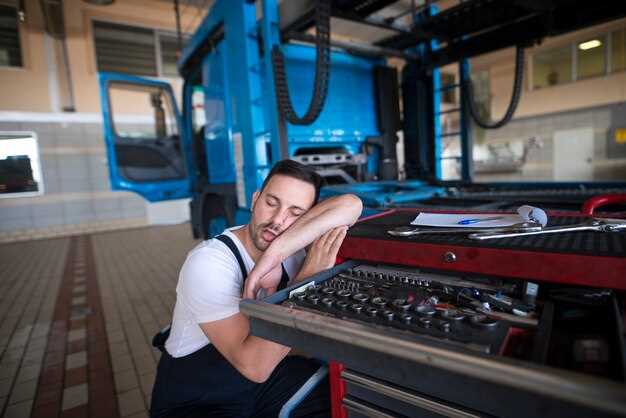
When it comes to protecting the bed of your truck, selecting the right bed liner is crucial. A good bed liner not only prevents scratches and dents from everyday use, but it also preserves the value of your vehicle over time. There are various types of bed liners available on the market, each designed to address different needs and preferences.
Understanding the options available is the first step in making an informed decision. Bed liners generally fall into two categories: drop-in liners and spray-on liners. Drop-in liners are pre-formed that fit directly over the bed, while spray-on liners are applied directly to the surface, creating a seamless, protective barrier. Each type has its advantages and drawbacks that can significantly impact your truck’s usability and appearance.
Beyond the type of liner, it’s essential to consider additional factors, such as material durability, ease of installation, and cost. Some materials offer greater resistance to impacts and chemicals, while others may provide a more textured surface that helps to prevent cargo from sliding. Understanding these parameters will help you identify the bed liner that meets your specific requirements and enhances your truck’s performance.
Evaluating Material Options for Truck Bed Liners

When selecting a truck bed liner, understanding the different material options available is crucial for making an informed choice. The most common types of materials include rubber, plastic, spray-on liners, and drop-in liners. Each material offers distinct advantages and disadvantages, impacting durability, installation, and protection.
Rubber bed liners are known for their excellent cushioning and shock absorption qualities. This material provides a non-slip surface that keeps cargo secure during transit. However, rubber can trap moisture underneath, potentially leading to rust and corrosion over time. Proper installation and maintenance are essential to mitigate this risk.
Plastic liners, also referred to as drop-in liners, are molded to fit the contours of the truck bed. They offer a durable layer of protection against scratches and dents, and their smooth surface makes cleaning easy. Nonetheless, while they are resistant to most chemicals, they can become slippery when wet, raising safety concerns. Additionally, improper installation may result in lifting or shifting.
Spray-on liners are a more permanent solution, applying a protective coating directly onto the bed surface. This material provides a seamless finish that is both strong and highly resistant to impact and friction. Spray-on liners are also customizable in terms of texture and color, allowing for a personalized touch. However, the application process typically requires professional help, which can increase costs, and once installed, they are less forgiving to remove than other options.
For those seeking a balance between protection and ease of application, hybrid systems combining elements from different materials are worth considering. These systems may involve a base of rubber or plastic augmented with a spray-on topcoat, offering enhanced durability and an aesthetic finish.
Ultimately, the best choice of material depends on individual needs, usage patterns, and budget. By carefully evaluating the characteristics and performance of each type, truck owners can select the liner that will best protect their investment while accommodating their specific requirements.
Understanding the Installation Process of Bed Liners
Installing a bed liner in your truck is essential for protecting the cargo area from damage while adding value to your vehicle. The installation process can vary depending on the type of bed liner you choose–drop-in, spray-on, or hybrid. Each method requires different tools and techniques, but understanding the general process will help ensure a successful installation.
1. Preparation
Before beginning the installation, thoroughly clean the truck bed. Remove any dirt, debris, or previous liners. For spray-on liners, it’s crucial to sand the surface lightly; this promotes better adhesion. Ensure the truck is parked in a well-ventilated area if using spray-on materials, as fumes can be harmful.
2. Selecting Tools and Materials
Gather the necessary tools. For drop-in liners, you typically need basic hand tools like wrenches and screwdrivers. For spray-on liners, you’ll require a spray gun, gloves, masking tape, and perhaps a more extensive set of tools depending on the kit instructions. Always refer to the manufacturer’s instructions for specific requirements.
3. Installation of Drop-in Liners
For drop-in liners, simply place the liner into the truck bed. Ensure it fits snugly against the walls and floor. Fasten the liner using the provided hardware, commonly clips or bolts. Check alignment to avoid any gaps where water or debris can accumulate.
4. Installation of Spray-on Liners
For spray-on liners, begin by masking areas that should remain uncoated, such as the tailgate and any metal surfaces. Use the spray gun to apply the bed liner evenly, starting from the corners and working towards the center. Multiple thin coats are preferable to avoid sagging or drips. Allow adequate drying time between coats as specified by the manufacturer.
5. Final Touches
Once installed, inspect the bed liner for any imperfections or areas that might need touch-ups. For drop-in liners, check the mounting points for tightness. For a spray-on liner, ensure there are no rough spots and the coating appears uniform. Allow the bed liner to cure fully before using the truck for hauling loads.
6. Maintenance
Proper maintenance ensures longevity. Regularly clean the bed liner and inspect it for signs of wear or damage. Address any issues promptly to keep the truck bed in optimal condition.
By following these steps, you can confidently install a bed liner that will protect your truck and enhance its functionality for years to come.
Comparing Costs and Long-Term Benefits of Different Bed Liners

When it comes to choosing the right bed liner for your truck, evaluating both initial costs and long-term benefits is essential. Different types of bed liners vary significantly in price, durability, and protection offered. Here we will compare spray-on liners, drop-in liners, and rubber mats to better understand their financial implications and long-term advantages.
1. Spray-On Liners
Spray-on liners are typically the most expensive option with initial costs ranging from $500 to $1,000, depending on the truck’s size and the service provider.
- Advantages:
- Excellent adhesion, conforming to the truck bed’s shape.
- Highly resistant to scratches, UV rays, and chemicals.
- Creates a non-slip surface, improving load security.
- Customizable options with different textures and colors available.
- Long-Term Benefits:
- Enhanced resale value due to superior protection.
- Lower likelihood of rust and corrosion, reducing maintenance costs.
- Long lifespan, often lasting for the life of the truck.
2. Drop-In Liners
Drop-in liners range from $200 to $600, making them a more budget-friendly option. Installation is straightforward as they simply sit in the bed over the original surface.
- Advantages:
- Easy to install and remove for cleaning or upgrades.
- Good initial protection against minor dents and scratches.
- Lower upfront cost compared to spray-on liners.
- Long-Term Benefits:
- Potential for wear and tear due to movement, which may lead to rust if moisture gets trapped underneath.
- Requires routine inspections to maintain effectiveness, adding to long-term costs.
3. Rubber Mats
Rubber mats typically cost between $100 and $300, offering the lowest initial investment among these options.
- Advantages:
- Affordability and easy handling for quick installation.
- Good cushioning for items loaded in the truck bed.
- Simple to clean and replace when worn out.
- Long-Term Benefits:
- Limited lifespan due to wear and degradation from UV exposure.
- Less effective at preventing scrapes and dents compared to other options.
- May require more frequent replacements or additional protective measures.
Conclusion
In summary, while drop-in liners and rubber mats provide lower upfront costs, spray-on liners offer superior durability and long-term protection. Investing in a spray-on liner may lead to savings in maintenance and a higher resale value in the long run. Ultimately, your choice should reflect your usage needs, budget constraints, and long-term ownership plans.



